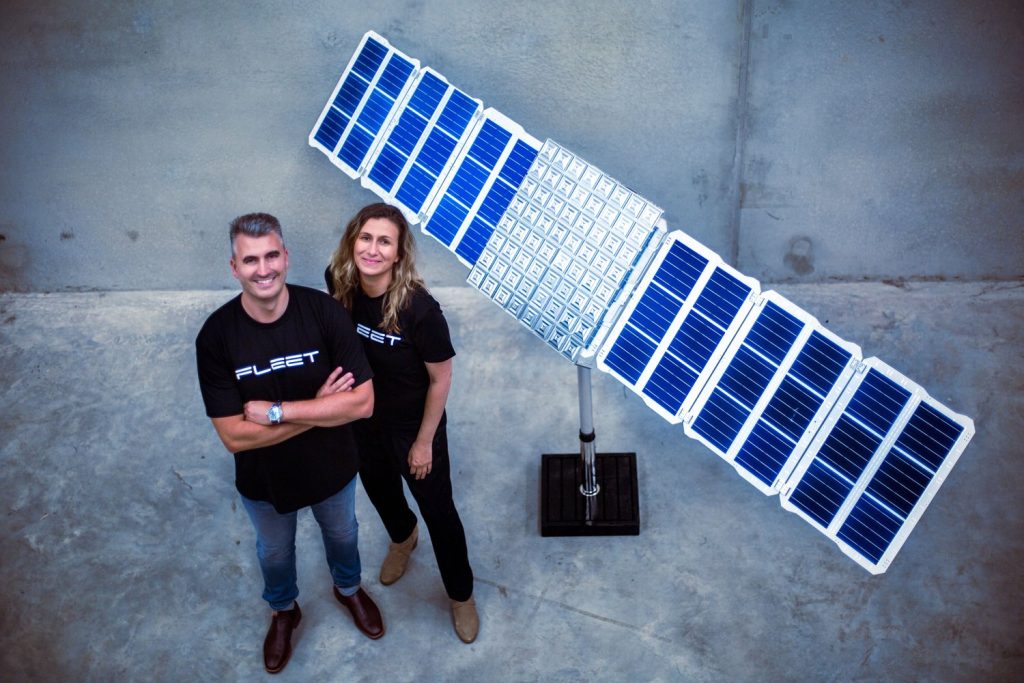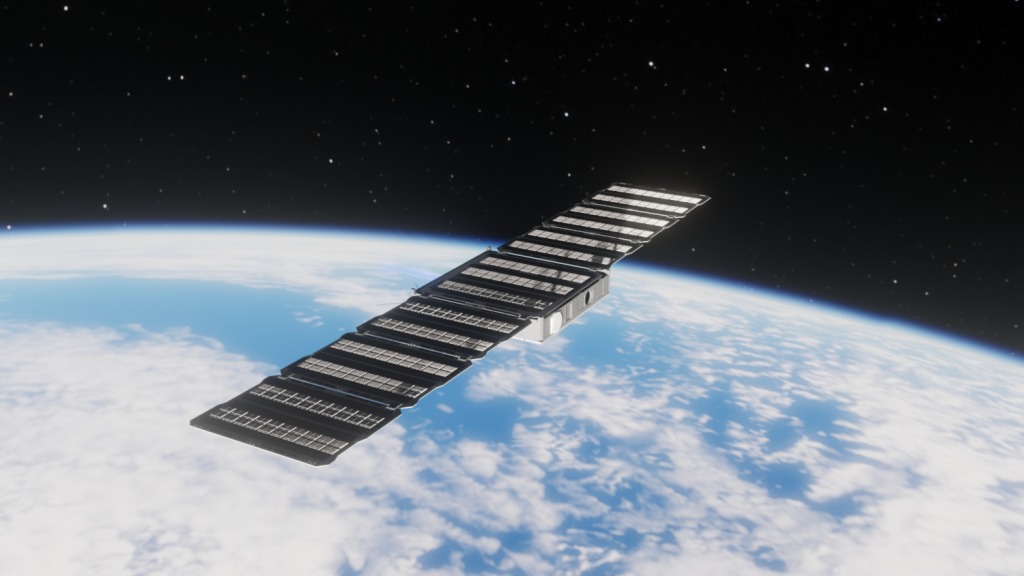Fleet Space, an Australia-based satellite developer, has successfully launched its new partially-3D printed Centauri 5 satellite on board theSpaceXFalcon 9 Transporter-5 mission.
The next-generation micro-satellite features a set of all-metal patch antennas that were entirely 3D printed, which the company believes is a world-first. Weighing in at just 12kg, Centauri 5 has been placed in Low Earth Orbit (LEO) at an altitude of around 530km.
It joins six other satellites in the company’s existing Centauri constellation, where it’s set to increase data capacity and decrease the latency of its peers. The constellation is operated by both Fleet Space and its partner泰瓦克国际。
最新的任务是Fleet Space与SpaceX的第三次发布,此后Centauri 4于2021年6月通过Transporter-2 Mission成功部署。
Fleet Space首席执行官兼创始人Flavia Tata Nardini表示:“我们通过持续实现我们的既定目标,并开发技术来可靠,成本效益。”“ Centauri 5将为我们现有的星座带来重要的新能力。”

Shooting for the stars with Fleet Space
Fleet Space is committing to making a name for itself in Australia’s budding space industry, which the country’s government expects will reach $12 billion by 2030, with an additional 20,000 jobs to boot. The firm first made headlines in 2018 when it launched Australia’s first set of commercial nanosatellites into LEO: the Proxima 1, Proxima 2, Centauri 1, and Centauri 2.
Unsurprisingly, Fleet Space also has a history with additive manufacturing technology. Late last year, the company unveiled plans to launch its Alpha satellites, which it claims is theworld’s first entirely 3D printed satellite。Slated for takeoff in 2023, the Alpha constellation will sit among the stars alongside the company’s existing Centauri satellites.
Together, the two satellite systems will aim to provide continuous coverage at data rates of up to 520kbps. Once operational, they will also deliver custom frequency bands to serve a wide variety of advanced IoT devices.
Additionally, the dual constellation will form the backbone of Fleet Space’s ExoSphere system. With the goal of revamping mineral exploration, ExoSphere will leverage ambient noise tomography to pinpoint critical resources up to 100 times faster than traditional methods such as explosives, vibroseis machines, and drilling (all while being far less environmentally damaging).
Nardini adds, “Centauri 5 also supports the development of our forthcoming Alpha constellation, which enables our pioneering ExoSphere mineral exploration tool with transformational benefits for the exploration of critical energy transition materials.”

The new Centauri 5 satellite
Centauri 5’s special 3D printed antennas are defined by their performance. Fleet Space claims the devices can deliver ten times more throughput per kilo of spacecraft than their predecessors, thanks to cutting-edge digital beamforming technology.
With digital beamforming, the firm’s 3D printed antennas offer increased gain, higher data rates, and enable the S-Band frequency channels to be reused across different beams. As a result, Centauri 5’s data capacity is increased by an impressive 2.6x.
Compared to Centauri 4, the new satellite also features defensive upgrades that make it more resistant to radiation in LEO, new direct communication capabilities with Fleet’s ground base, and an improved S-Band range. This allows for uplink to take place at standard ground station frequencies.
The upcoming 3D printed Alpha satellites will also house up to 64 of the advanced all-metal patch antennas.

尽管有无数的“世界优先”主张,但车队空间并不是唯一探索3D印刷卫星组件的公司。就在上个月3D系统announced that aerospace manufacturer空中客车contracted it to3D print critical parts for the latter’s upcoming OneSat satellite。与传统的卫星,设计d for defined missions, Airbus says the OneSat will be fully reconfigurable in orbit for tunable coverage area, capacity, and frequency.
在其他地方,跨国电子制造商Mitsubishi Electric最近开发的一种新方法3D printing freeform satellite antennas in-orbit。该技术围绕着新开发的液体树脂旋转,该树脂不仅是在真空中制造的定制制造,而且能够通过太阳的紫外线进行光聚合。
订阅3D Printing Industry newsletterfor the latest news in additive manufacturing. You can also stay connected by following us on推特, liking us onFacebook, and tuning into the3D Printing Industry YouTube Channel。
Looking for a career in additive manufacturing? Visit3D Printing Jobsfor a selection of roles in the industry.
Featured image shows the Fleet Space Centauri 5 with 3D printed metal patch antennas. Image via Fleet Space.



